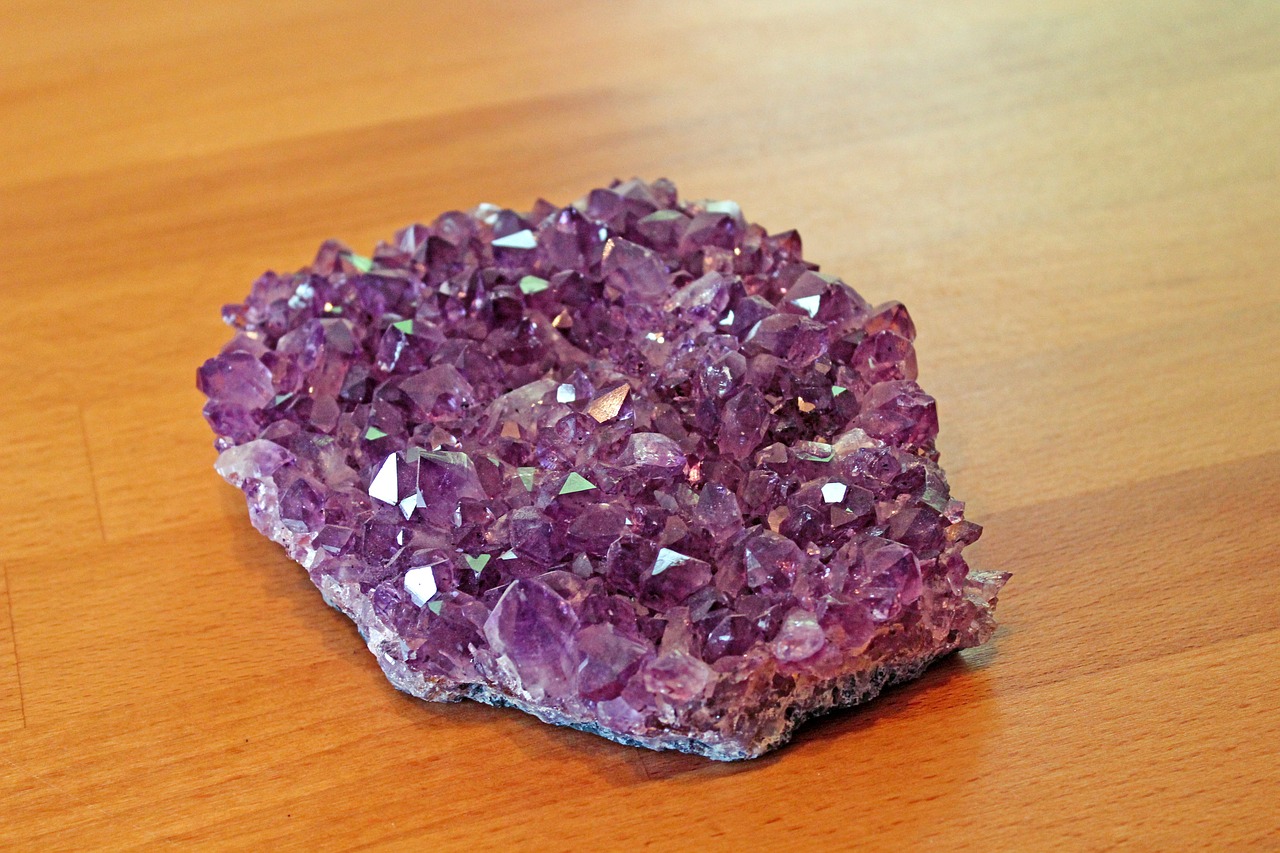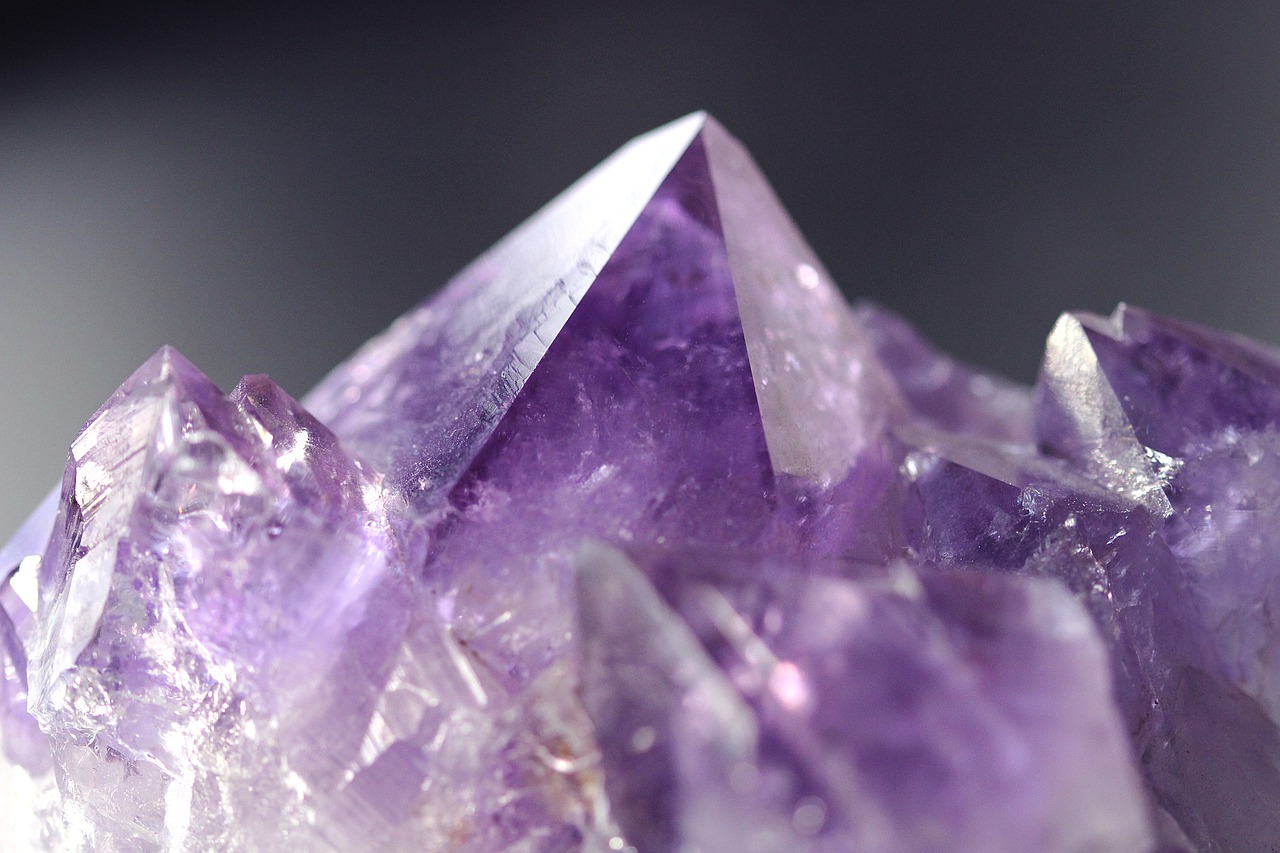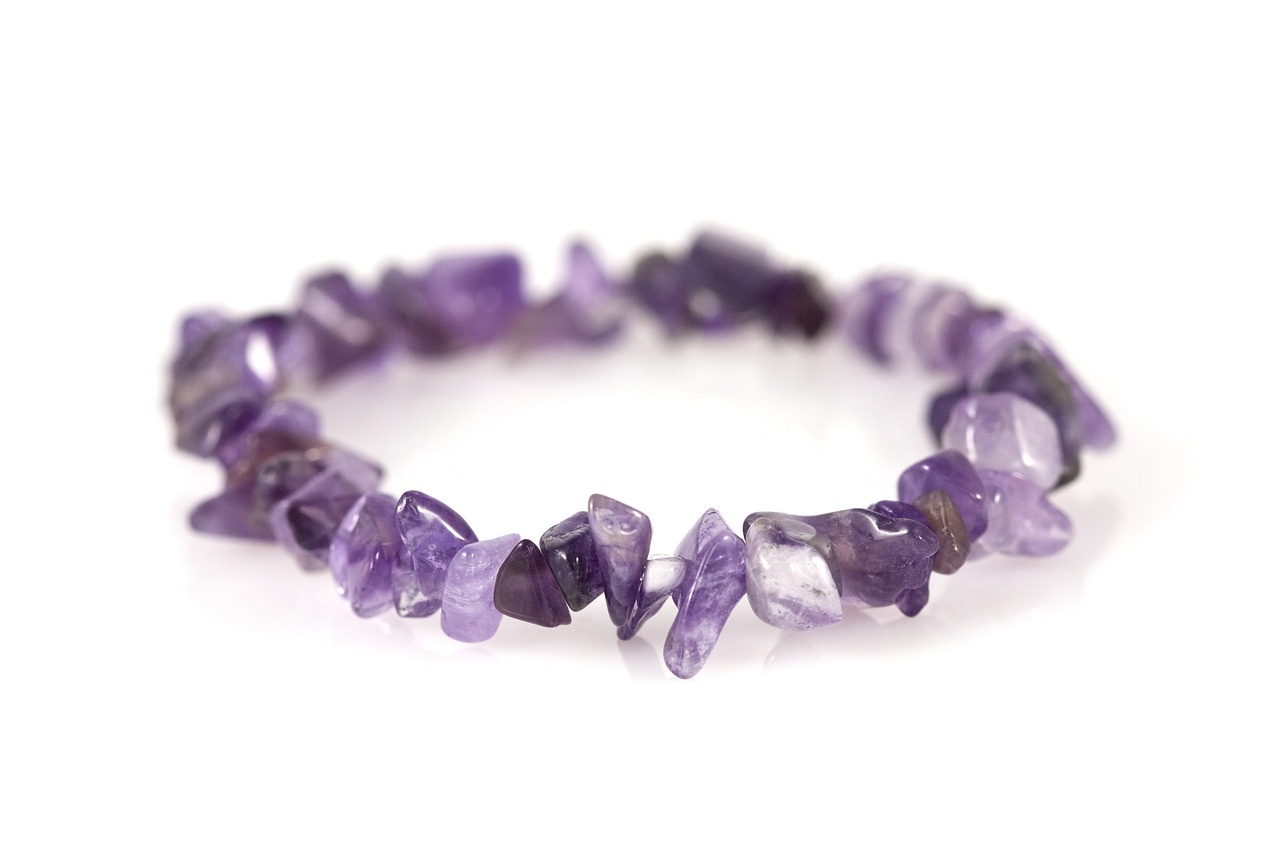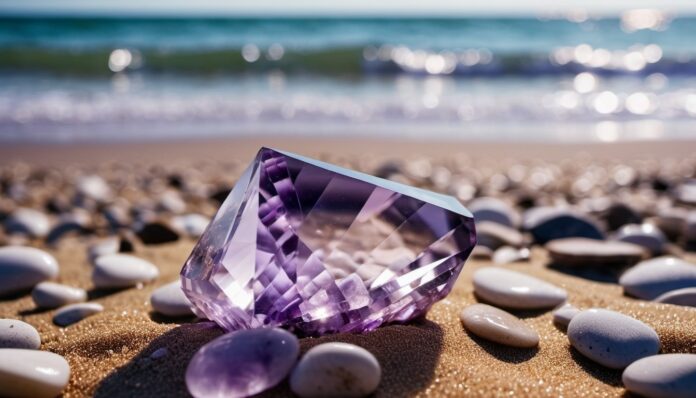Amethyst is a stunning and popular gemstone, renowned for its beautiful purple hues and rich history. This variety of quartz has been cherished for centuries, used in jewelry, carvings, and various decorative objects. Its captivating color and reputed mystical properties make amethyst a favorite among collectors and gemstone enthusiasts.
Discovery and History
Amethyst derives its name from the ancient Greek word “amethystos,” meaning “not intoxicated,” reflecting the belief that the stone could prevent drunkenness. The Greeks and Romans highly valued amethyst, often using it in their drinking vessels to ward off the effects of alcohol.
Amethyst has been discovered in numerous archaeological sites, including those of the ancient Egyptians, who used it in jewelry and amulets. In the Middle Ages, it was considered a symbol of royalty and worn by European monarchs and clergy.
Unique Formation and Composition
 Amethyst is a variety of quartz, specifically silicon dioxide (SiO2). Its distinctive purple color comes from trace amounts of iron and other minerals, which are irradiated over time. Amethyst forms in geodes, often found in volcanic rock cavities, where silica-rich solutions create large, crystal-filled cavities.
Amethyst is a variety of quartz, specifically silicon dioxide (SiO2). Its distinctive purple color comes from trace amounts of iron and other minerals, which are irradiated over time. Amethyst forms in geodes, often found in volcanic rock cavities, where silica-rich solutions create large, crystal-filled cavities.
The process results in the formation of beautiful, purple crystals that vary in shade from pale lavender to deep violet.
Colors of Amethyst
Amethyst is renowned for its range of purple hues, which can include:
- Light Purple: Delicate and often referred to as “rose de France” amethyst.
- Medium Purple: The most common and widely recognized shade.
- Deep Purple: Rich and intense, sometimes with red or blue undertones.
- Bicolored: Occasionally, amethyst may exhibit zones of purple and other colors, such as white or green.
Sources and Mining Locations
 Amethyst can be found in numerous locations worldwide, with significant deposits in Brazil, Uruguay, Zambia, and Russia. Brazilian amethyst is particularly famous for its large crystals and vibrant color, while Zambian amethyst is prized for its deep purple hue with blue undertones. Each region produces amethyst with unique characteristics, adding to the stone’s diversity.
Amethyst can be found in numerous locations worldwide, with significant deposits in Brazil, Uruguay, Zambia, and Russia. Brazilian amethyst is particularly famous for its large crystals and vibrant color, while Zambian amethyst is prized for its deep purple hue with blue undertones. Each region produces amethyst with unique characteristics, adding to the stone’s diversity.
Symbolism and Meaning
Amethyst is associated with clarity, calmness, and spiritual growth. It is believed to enhance intuition, promote emotional balance, and protect against negative energy. Many cultures use amethyst as a talisman to bring tranquility and clarity to the mind, as well as to foster a deeper connection to the spiritual realm.
Healing Properties
Amethyst is reputed to have numerous healing properties:
- Emotional Healing: Calms the mind, reduces anxiety, and promotes emotional stability.
- Physical Healing: Believed to aid in detoxification and improve the immune system.
- Spiritual Growth: Enhances spiritual awareness and aids in meditation and introspection.
- Protective Energy: Shields against negative energy and psychic attacks.
- Chakra Balancing: Used to balance and cleanse the crown and third eye chakras.
Care and Maintenance
Amethyst is a durable gemstone with a rating of 7 on the Mohs scale of hardness. It is resistant to scratches but should still be handled with care to prevent damage. Clean amethyst jewelry with warm, soapy water and a soft brush, avoiding harsh chemicals or ultrasonic cleaners. Store amethyst separately to avoid scratching softer gemstones.
Horoscope Signs and Amethyst
 Amethyst is particularly beneficial for certain horoscope signs, enhancing their natural traits and providing balance:
Amethyst is particularly beneficial for certain horoscope signs, enhancing their natural traits and providing balance:
- Pisces: Amethyst helps Pisces connect with their intuition and enhances their spiritual awareness.
- Aquarius: This stone aids Aquarians in maintaining emotional balance and reducing stress.
- Sagittarius: Amethyst supports Sagittarians by promoting clarity of thought and focus.
- Aries: It helps Aries remain calm and collected, promoting inner peace.
Value of Amethyst Compared to Diamond
Amethyst is generally much more affordable than diamonds. The value of amethyst varies based on color, clarity, and size, with common varieties being quite inexpensive and rare, deep-colored specimens costing more. However, even the most expensive amethyst is typically far less costly than a diamond of similar size. Diamonds are priced based on their carat weight, clarity, color, and cut, often reaching thousands of dollars per carat, while amethyst remains accessible to a broader range of budgets.
Interesting Facts
- Amethyst is named after the Greek word “amethystos,” meaning “not intoxicated.”
- It forms in geodes within volcanic rock cavities.
- Amethyst is known for its striking purple hues, ranging from light lavender to deep violet.
- Each piece of amethyst is unique, with different shades and patterns.
- Amethyst has been used since ancient times for jewelry, amulets, and drinking vessels.
- Brazilian amethyst is famous for its large crystals and vibrant color.
- Zambian amethyst is prized for its deep purple hue with blue undertones.
- It is a variety of quartz, specifically silicon dioxide (SiO2).
- Amethyst is durable and resistant to scratches.
- It is often used in rings, necklaces, bracelets, and earrings.
- Amethyst is associated with clarity, calmness, and spiritual growth.
- It is believed to enhance intuition and emotional balance.
- Amethyst provides protective energy, shielding against negative influences.
- The largest amethyst deposits are found in Brazil and Zambia.
- Amethyst comes in various shades of purple, from light to deep.
- The Greeks used amethyst to prevent drunkenness.
- Amethyst is used in Feng Shui to bring tranquility and balance.
- It enhances spiritual awareness and aids in meditation.
- Amethyst is considered a symbol of royalty and was worn by European monarchs and clergy.
- The deep purple color of amethyst is due to trace amounts of iron and irradiation.
- Amethyst was highly valued by ancient civilizations, including the Egyptians and Greeks.
- Its unique patterns and colors ensure that each piece of amethyst jewelry is one-of-a-kind.
Amethyst is a gemstone that captivates with its beauty, history, and mystical qualities. Whether you are a collector, a jewelry lover, or someone who appreciates the wonders of nature, amethyst offers a fascinating glimpse into the earth’s geological processes.
Its wide range of purple hues and reputed healing properties ensure that there is an amethyst piece to suit every taste, making it a cherished gemstone around the world.
